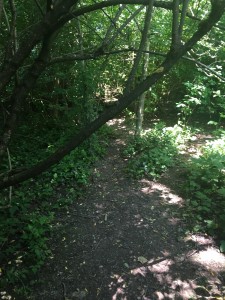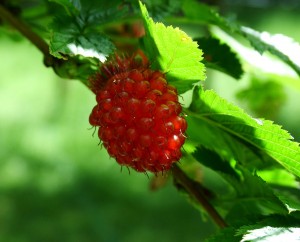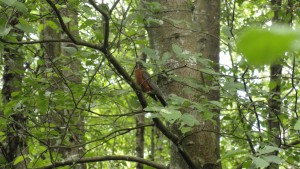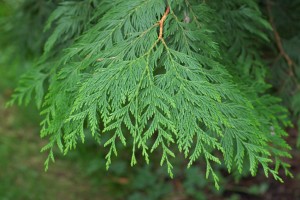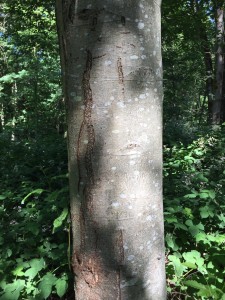
One night I went to bed thinking about what other meditations could be done in the park. When I woke up the next morning I had the answer. Hug a tree. I wanted to have a more direct physical connection with some of the oldest organisms in the park. Besides, hugging is good for health. It makes us feel good. The plan was simple: walk up to a tree and hug it. This exercise turned out to be the most uncomfortable meditation experience I had in my microsite.
As I approached the alder tree in my microsite I was by overcome by a deep respect for the tree and felt that I should proceed accordingly. Not because I thought the tree would appreciate it. The process I went through was for me. When I first approached the tree in my microsite I put my hand up to them as if to shake hands. I felt thankful for them being there. I felt thankful for them cooling the hot air around me, providing shade, taking in carbon dioxide, emitting oxygen. What other chemicals were they taking in and giving off? I thought about how their roots go deep down into the ground drawing up nutrients and interacting with billions soil organisms. I stroked their trunk, felt her rugged bark. After a couple minutes I moved in closer. There was nobody around but I still felt self-conscious and looked around to make sure there were no humans to see me. What would they think? “Who is this CREEPER hugging a tree?”
Finally, I wrapped my hands around and hugged. Whoa, trees feel hard. Part of me felt like I was taking something (energy?) so I focused on giving some energy back as well. Was this some sort of exchange? I also tried to feel love for the tree, which intensified as I squeezed harder. I stood there hugging for about 10 minutes. I had to relax my tired arms after a few minutes though and hugged intensely every few minutes. My mind did wander a lot during those 10 minutes: “I’m hugging a tree, this is silly, what if someone sees me?, it’ll make a good story though, am I doing this for the story?” I cannot say that some sort of “energy” from the tree was flowing through me making feel incredible but the whole experience felt good. Afterward, on the bike ride home I noticed that my mood was quite cheerful.
Time: 5-10 minutes
Instructions:
Rather than have set instructions I would encourage anyone to hug a tree in their own way.
